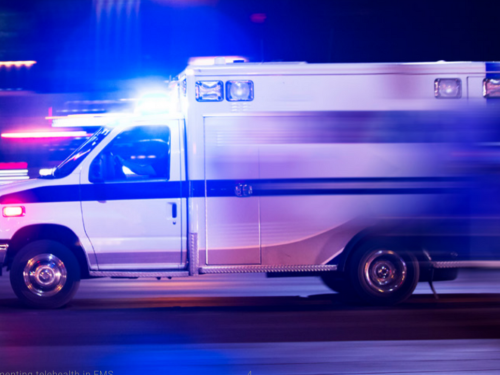By Nathan Trauernicht and Lisa Mills, MD
Over the past decade, the University of California, Davis, Fire Department, or UCDFD, has seen a steady increase in calls related to behavioral health in its community. The increase tells us that there is an ever-expanding need for mental health services in our community, which includes nearly 40,000 students. We’ve been heartened by the destigmatization of behavioral health conditions as well as an uptick in clinical referrals for long-term, regular and even preventative care. As referral rates have risen, the gap between the time an individual seeks care and when they ultimately receive it has increased. The needs of our community are evolving — at times challenging the capacity of our systems and services.
Three years ago, our department began exploring the depth and breadth of the nation’s mental health crisis, including its implications for our own community. In the face of an increasingly complicated challenge, we posed the following question: “How can we help people step off of the path to crisis?” We wondered if there were measures we could take to make meaningful progress toward a solution. We decided to create a model for community-based, evidence-informed systems of care that meet people where they are, to enhance the overall wellbeing of the community through improved equity and access to services before people reach crisis.
Normalizing support in the spaces before and after crisis
In 2022, the answer to our question started to take shape in the form of a non-emergency mobile response service. We imagined that this service would go out to members of our community to provide around-the-clock compassionate intervention and service navigation. As we envisioned it, the service would aim to normalize support in the spaces before and after a crisis. In its final form, it would be an enduring initiative intended to reduce barriers to access by connecting individuals in need of services to those already available within our community. At its most basic level, our service, now called Health 34, would provide support to all members of our campus community during their most vulnerable moments.
In bringing Health 34 to life, our team is elevating standards. We recognize that while reacting to crises – rather than anticipating and preventing them – is often the norm in healthcare, it regularly fails individuals and clinical systems alike. Thus, we are re-imagining the line of action. Our operation puts the individual first, utilizing a multi-disciplinary approach that marries harm reduction and compassionate care with meaningful community engagement. It is our sincerest hope that in delivering this type of support, we can effect positive change in our community.
Why do we call the initiative, which began operating in September 2023, Health 34? Our fire department is referred to as Station 34 within a county-wide numbering system for fire stations. Health is the unit identifier, signifying the operation’s holistic approach to improving community wellbeing.
With a specially designated 10-digit phone number, Health 34 is available to respond over the phone or in person. It is not a replacement for the 911 system. Health 34 is, instead, a non-emergency resource looking to impact people’s lives in the spaces before or after a 911 call. Those experiencing an emergency are routed to 911 for appropriate emergency services.
This team of compassionate service navigators works 24/7/365 to help community members step off the path to crisis. Providers with backgrounds in emergency medical services and training in behavioral health and basic-needs support navigate campus in a large red van that is compliant with the Americans with Disabilities Act. The van’s interior is designed to be a safe space for those experiencing challenges in day-to-day life. As a mobile unit, Health 34 more easily bridges gaps in supportive care, reducing barriers to access and enhancing equity in services. The result is compassionate community care before a crisis.
Health 34 is not only rethinking the point at which we engage someone on the path to crisis, but also the concept of harm reduction. Typically, the term “harm reduction” is associated with substance misuse treatment or suicide prevention. To Health 34, harm reduction is a more inclusive concept: caring for individuals’ mental and physical health, providing education and resources, empowering people to make their own choices while remaining safe, and finally, encouraging people to help others – to be a friend, listener or helping hand – all in support of health equity.
Our mobile safe space functions as a non-judgmental place to talk through troubling situations and feelings of fear, sadness, anxiety, confusion and other emotions. The team provides multi-faceted support. It includes assistance making appointments and completing intake forms; transportation to appointments on campus; and navigation and connection to resources matched to client needs. Resources can be nontangible, like options to meet needs in broad areas of health and wellbeing, as well as education on self-care, behavioral health, substance misuse disorder or other medical conditions; or they may be tangible, like leave-behind naloxone.
Success for Health 34 is success for our community. It brings increased trust among our community members (particularly among underrepresented and historically marginalized communities), calls for assistance and support, less suffering and more resource utilization. Altogether, this enhances the lived experiences of our community members.
About the authors
Nathan Trauernicht, who has more than three decades of experience in the fire service, joined the UC Davis Fire Department in 2008 and has been chief since 2012. He has earned the designations of Chief Fire Officer, Chief EMS Officer and Chief Training Officer from the Center for Public Safety Excellence. Trauernicht has held leadership positions with professional associations and is a past president of both the California Fire Chiefs Association and the USA branch of the Institution of Fire Engineers.
Lisa Mills became the first medical director of the UC Davis Fire Department in 2018. She is a board-certified emergency medicine physician, working in both the UC Davis Health emergency department and pediatric emergency department.









